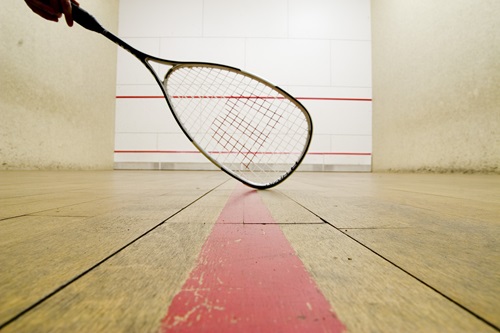
Photo © Chayakorn Lotongkum | Dreamstime.com
Squash will make its Olympics debut at the 2028 Summer Games in Los Angeles — which US Squash president and CEO Kevin Klipstein has hailed as “a significant breakthrough for the sport” — and a proliferation of programs around the country are keen on developing a generation of players while also helping them become better students.
Young athletes living in cities as unassuming as Pittsburgh and Cleveland, for example, are discovering and learning the racquet sport that has its roots in 18th century London.
At Pittsburgh’s recently opened Steel City Squash, a new program in partnership with area schools and other organizations for kids in grades 4 through 12 — many of them from low- to moderate-income households — combines teaching how to play with academic tutoring.
“Steel City Squash is all about providing long-term support to help students thrive academically and socially,” Brad Young, the executive director of Steel City Squash, told Kidsburgh.org. “Our primary goal is to break the cycle of generational poverty by investing in youth enrichment over an extended period. … We start working with students as early as fourth grade, focusing on reinforcing academic skills and providing remediation to ensure they’re on track.”
“Traditionally, sports like football, basketball, and baseball dominate the landscape for African American youth,” added Donna Jackson of the Larimer Consensus Group, an all-volunteer neighborhood organization that is involved with the Steel City Squash program. “However, introducing squash opens new horizons. It shows our children that they can achieve success in diverse sports, not just the ones typically associated with our community. This initiative aims to broaden their perspectives and encourage them to pursue excellence in various fields, both athletically and academically.
Steel City Squash, which houses classrooms and a college/career center, also offers fee-based programming for kids and adults, as well as youth leagues.
Meanwhile, Urban Squash Cleveland (USC) combines academics and squash with community service activities and tournament experience. Like the program at Steel City Squash, this one is for kids in grades 4 through 12 and focuses on tutoring, homework help and squash coaching. All of USC’s programs, equipment and travel for tournaments are free, according to TheLandCle.org.

USC also is part of the Squash and Education Alliance (SEA), an international network of 27 member organizations — 21 in the United States — that provide year-round support to young people through the sport. According to the alliance’s website, more than 2,000 elementary, middle and high school students are enrolled in SEA programs around the country, 96% of them identify as Black or Latino, and 94% of students who stay in member programs graduate from high school and enroll in postsecondary schools.
And they might even become high-level squash players; a handful of SEA alums have competed professionally.
“All the kids were beginners, and some have more abilities than the others and that doesn’t really make any difference to how well they do,” squash director Duncan Steele told the TheLandCle.org. “It’s how well they want to apply. The long goal is to get you into college. The squash is just the hook, the carrot. And it’s getting the parents who buy into that. If the parents are behind the program, behind what we do and believe in what we do, they stay in the program.”
Another member of the Squash and Education Alliance is the Santa Barbara School of Squash (SBSOS) in California. Founded in 2006 by executive director Robert Graham, a former No. 1 U.S. squash player, the all-volunteer organization limits its enrollment to 30 kids in grades 5 through 12.
“It simply isn’t enough these days to be ‘smart’ to gain entrance to a university, especially a top university,” Graham told the Santa Barbara Independent, adding that more than 150 college and universities now offer squash programs.
According to the Independent:
In 2022, SBSOS lost its squash home at the Santa Barbara Athletic Club, where it had played since inception. It initially pivoted to other sports and then in November 2023, the Santa Barbara Family YMCA converted a racquetball court to a squash court. Now, SBSOS uses that alongside the YMCA’s racquetball courts for its four weekday sessions. The racquetball courts are not ideal, according to Graham, but placing tape on the walls and floors enables the kids to practice some skills and everyone rotates to the one squash court. Despite the venue challenges, each year the kids have continued to play in multiple tournaments and in the SoCal Junior Squash League.
Every weekday, SBSOS holds one to 1.5 hours of academic programming, four of those at the YMCA after practice. Staff and volunteers oversee homework and tutor where needed. For students deemed capable, SBSOS encourages and assists with application to private schools. In the fall, 10 SBSOS students will be attending Laguna Blanca School, and one will go to Crane Country Day School. All SBSOS students who have attended these schools have received near-full scholarships.
As Joe Juster, president of the USC board in Cleveland said: “It’s all about giving kids an opportunity. And all of this is just in service of that. You can change one kid’s life a whole lot. … Squash is the game. I mean, if you compete against somebody else, you’re completely responsible for the result, and at the same time, you’re in a community of players who are going through the exact same things. And we have very much of a team concept here, so that the kids are supporting one another. I think it’s a special game.”

